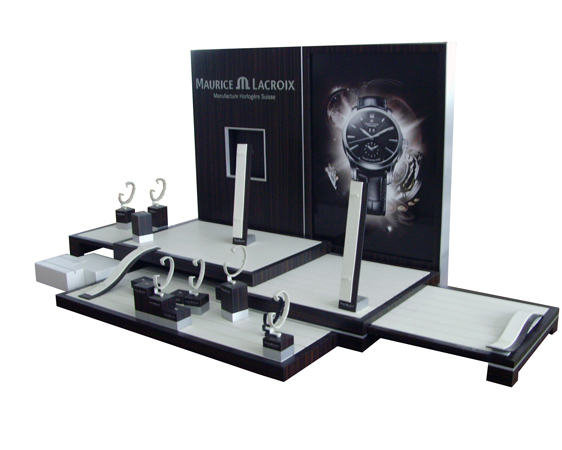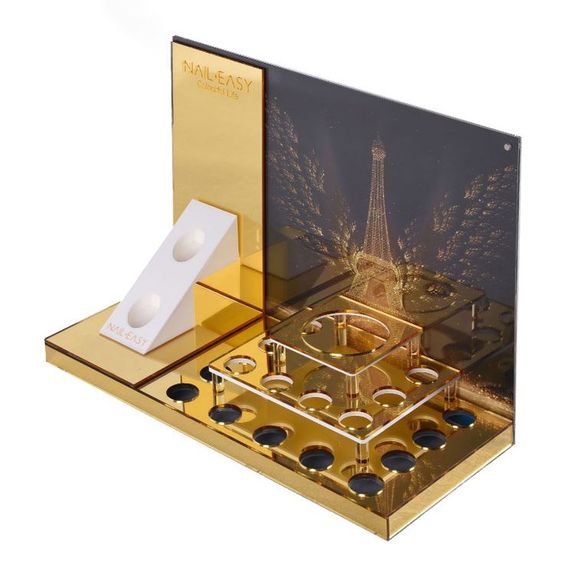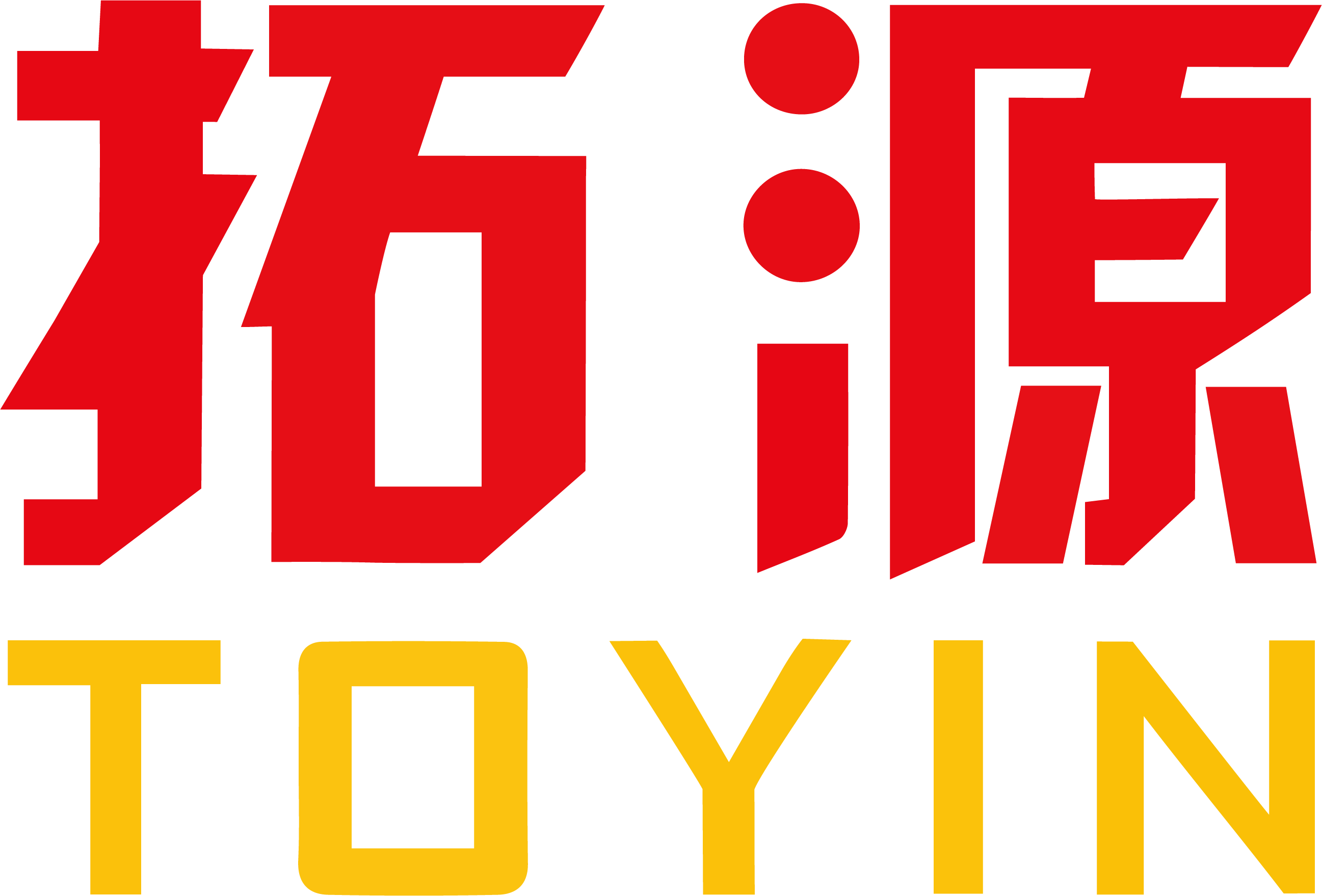polpa di carta modellata, inserti in schiuma tagliati su misura e pezzi di cartone ondulato fustellati. Queste soluzioni riempiono gli spazi vuoti e forniscono supporto strutturale, garantendo che tutti i componenti del tuo espositore arrivino a destinazione senza danni.Come l'imballaggio esterno protegge i displayL'ultimo strato di difesa è il contenitore esterno. Questo involucro esterno protegge il display da forature, compressioni e pericoli ambientali. La scelta della scatola o della cassa rappresenta la barriera principale tra il prodotto e i rigori della catena di fornitura. Un imballaggio esterno adeguato protegge i display fornendo un involucro durevole e strutturalmente solido.Selezione della scatola o della cassa giusta
Dovresti scegliere un contenitore esterno in base alle dimensioni, al peso e alla destinazione della spedizione del tuo espositore. Per la maggior parte delle spedizioni nazionali, le scatole di cartone ondulato sono la soluzione standard.Scatole a doppia o tripla parete:È necessario utilizzare queste scatole per la loro superiore resistenza alla perforazione e alla forza di impilamento. La durata di una scatola si misura dalla suaforza di scoppio
, ovvero la pressione che può sopportare prima di rompersi. Le scatole a tripla parete offrono una resistenza significativamente maggiore, rendendole essenziali per unità pesanti o fragili.
Certificato ISPM 15
Casse di legno:
Per spedizioni internazionali di grandi dimensioni, pesanti o di valore elevato, è obbligatorio utilizzare casse di legno. Queste casse devono essere certificate ISPM 15 per prevenire la diffusione di parassiti. Ciò comporta
trattamento termico (HT) del legnoe apponendovi il marchio IPPC ufficiale. La mancata osservanza di questa norma può comportare il rifiuto, la distruzione o il reimballaggio forzato della spedizione a vostre spese da parte della dogana.Sigillatura ed etichettatura per il transitoSigillare ed etichettare correttamente il contenitore ne comunica le esigenze di movimentazione e ne garantisce l'integrità. Questo passaggio finale è fondamentale per una consegna di successo.
Suggerimento: usa il
Metodo H-Tape
📦 Puoi creare una chiusura sicura applicando del nastro da imballaggio a forma di "H" sulla parte superiore e inferiore della scatola. Per prima cosa, nastra la cucitura centrale, dove si incontrano le alette principali. Quindi, nastra lungo le due cuciture laterali. Questo metodo rinforza tutti i potenziali punti deboli.È inoltre necessario applicare chiare istruzioni di gestione. Utilizzare
pittogrammi internazionali universalmente riconosciuti
per superare le barriere linguistiche. | Icona | Senso |
|---|---|---|
Bicchiere di vino rotto | Fragile, maneggiare con cura. | Due frecce verso l'alto |
Tieni questo lato rivolto verso l'alto. | ||
Per il trasporto via mare, è necessario combattere l'umidità. Posizionare sacchetti essiccanti all'interno del container per assorbire l'umidità ed evitare danni. La quantità necessaria dipende da | volume del contenitore, tempo di transito e clima | Infine, posiziona l'etichetta di spedizione principale sulla superficie più grande del pacco. Assicurati che sia |
piatto e lontano da qualsiasi cucitura per garantire la scansionabilità | . | Con una semplice checklist puoi garantire una spedizione senza danni. |
Proteggere le superfici
Cuscino per gli urtiRinforzare gli angoliUtilizzare un contenitore esterno resistenteQuesta solida strategia rappresenta un investimento diretto sulla tua redditività. Un packaging migliore protegge gli espositori e può aumentare i ricavi. Adotta questo sistema per costruire la tua reputazione.fidelizzare i clienti
, COME

Il 52% dei clienti riacquista
da marchi che utilizzano imballaggi di alta qualità.
Domande frequenti
Come posso imballare un espositore dalla forma insolita?Si consiglia di utilizzare inserti stampati su misura, realizzati con materiali come schiuma EPS o polpa di carta. Questi inserti creano una base perfetta per la forma unica del vostro display. Questo metodo immobilizza il prodotto, ne impedisce il movimento interno e offre una protezione superiore contro gli urti durante il trasporto.Posso riutilizzare gli imballaggi per i miei espositori?È possibile riutilizzare componenti durevoli come casse di legno e blocchi di schiuma PE. Ispezionarli per verificare eventuali segni di usura o danni prima di ogni utilizzo. È consigliabile sostituire sempre gli articoli monouso come scatole di cartone ondulato, pellicola protettiva e nastro sigillante per garantire la massima protezione per ogni spedizione.Qual è l'errore di imballaggio più comune? 🧐L'errore più comune è lasciare spazi vuoti all'interno della scatola. Gli spazi vuoti possono far sì che il prodotto si sposti e urti contro le pareti del contenitore, danneggiandolo. È necessario riempire tutti gli spazi vuoti con materiali di imbottitura o rinforzo adeguati per garantire la sicurezza dell'esposizione.
Quale nastro da imballaggio è più adatto per le scatole pesanti?Per le scatole pesanti è necessario un nastro adesivo resistente e sensibile alla pressione. Il nastro attivato dall'acqua (WAT) crea un'adesione efficace sulle superfici ondulate. Per il nastro adesivo sensibile alla pressione standard, sceglietene uno con uno spessore di almeno 2,5 mil per un'adesione affidabile e una maggiore resistenza sulle spedizioni più pesanti.extremely lightweight—about 98% air—which helps lower shipping costs. You can mold it into precise shapes that nest your display perfectly, preventing any movement. This method can reduce damage rates by up to 40% by creating a custom-fit environment for complex or multi-part units.
Using the 'Floating' Method
The 'floating' method is an industry-standard technique for isolating your product from external shock. You create a cushioned buffer that allows the display to "float" inside its outer container. This system uses the foam's structure to absorb and dissipate energy from impacts.
Rule of Thumb: The Two-Inch Zone 📏 You should maintain a minimum of two inches of cushioning between the display and the interior box walls. This space is critical. It ensures that any force from a drop or collision is absorbed by the foam before it reaches your product.
This method is essential for protecting items with low g-factors, like sensitive electronic displays that are vulnerable to g-forces. By creating this protective gap, you isolate the display from harmful vibrations and impacts. This simple step is a key part of how packaging protects displays, ensuring they arrive in perfect working order.
Reinforcing Vulnerable Edges and Corners
Your display's edges and corners are its most vulnerable points. Impacts to these areas can cause cracks, chips, and structural failure. You can add a crucial layer of structural integrity by reinforcing these weak spots. This step ensures your package can withstand the pressures of stacking and handling during transit.
Using Corner and Edge Protectors
You should apply corner and edge protectors to shield your display from direct impact. These protectors also dramatically increase the stacking strength of your boxes. They transfer the stress of a stacked load to the container's edges, creating a stronger frame. This reinforcement protects against damage from forklifts and clamp trucks. You have several material options for this purpose:
Laminated Paperboard: This material, often made from recycled paper, is formed into rigid shapes like VBoard or UChannels. It is ideal for protecting the edges of flat items like tabletops or glass panels.
Polyethylene (Plastic): You can use plastic protectors for heavy-duty applications or in high-moisture environments. They offer excellent durability and weather resistance.
Moisture-Resistant Composites: Some protectors combine paper and plastic. They provide strong protection for shipments exposed to the elements on flatbed trucks or in humid climates.
Bracing Complex or Multi-Part Displays
Complex or multi-part displays require internal bracing to prevent components from shifting. You must immobilize every piece to avoid collisions inside the box. Effective bracing combines two distinct techniques.
Pro Tip: Blocking vs. Bracing 🧱
Blocking prevents your display from moving side-to-side or front-to-back.
Bracing stops your display from moving up and down. You need both. Bracing keeps the load from jumping over the blocks, ensuring total stability.
You can achieve a secure fit with custom inserts designed for your product's unique shape. These inserts act as a perfect cradle, holding everything in place. Common options include molded paper pulp, custom-cut foam inserts, and die-cut corrugated pieces. These solutions fill empty space and provide structural support, ensuring all parts of your display arrive without damage.
How Outer Packaging Protects Displays

The final layer of defense is the outer container. This exterior shell shields your display from punctures, compression, and environmental hazards. Your choice of box or crate is the primary barrier between your product and the rigors of the supply chain. Proper outer packaging protects displays by providing a durable, structurally sound enclosure.
Selecting the Right Box or Crate
You should select an outer container based on your display's size, weight, and shipping destination. For most domestic shipments, corrugated boxes are the standard.
Double-Walled or Triple-Walled Boxes: You need to use these boxes for their superior puncture resistance and stacking strength. A box's durability is measured by its burst strength, or the pressure it can withstand before rupturing. Triple-walled boxes offer significantly higher resistance, making them essential for heavy or fragile units.
ISPM 15 Certified Wooden Crates: For very large, heavy, or high-value international shipments, you must use wooden crates. These crates must be ISPM 15 certified to prevent the spread of pests. This involves heat-treating (HT) the wood and stamping it with an official IPPC mark. Failure to comply can lead to customs rejecting, destroying, or forcing the repackaging of your shipment at your expense.
Sealing and Labeling for Transit
Properly sealing and labeling your container communicates its handling needs and ensures its integrity. This final step is critical for a successful delivery.
Pro Tip: Use the H-Tape Method 📦 You can create a secure seal by applying packaging tape to form an 'H' on the top and bottom of the box. First, tape the center seam where the major flaps meet. Then, tape along the two edge seams. This method reinforces all potential weak points.
You must also apply clear handling instructions. Use universally recognized international pictograms to overcome language barriers.
Pictogram | Meaning |
|---|---|
Cracked Wine Glass | Fragile, handle with care. |
Two Upward Arrows | Keep this side up. |
Hands Cupping a Box | Handle with care. |
For sea freight, you need to combat moisture. Place desiccant packs inside the container to absorb humidity and prevent damage. The quantity you need depends on container volume, transit time, and climate. Finally, place the main shipping label on the package’s largest surface. Ensure it is flat and away from any seams to guarantee scannability.
You can ensure damage-free shipping with a simple checklist.
Protect Surfaces
Cushion for Shock
Reinforce Corners
Use a Durable Outer Container
This robust strategy is a direct investment in your profitability. Better packaging protects displays and can increase revenue. Adopt this system to build your reputation. You will gain customer loyalty, as 52% of customers repurchase from brands that use premium packaging.
FAQ
How do I package an unusually shaped display?
You should use custom-molded inserts made from materials like EPS foam or paper pulp. These inserts create a perfect cradle for your display's unique shape. This method immobilizes the product, prevents internal movement, and provides superior protection against shock during transit.
Can I reuse packaging for my displays?
You can reuse durable components like wooden crates and PE foam blocks. Inspect them for any wear or damage before each use. You should always replace single-use items like corrugated boxes, protective film, and sealing tape to ensure maximum protection for every shipment.
What is the most common packaging mistake? 🧐
The most common mistake is leaving empty space inside the box. Voids allow your product to shift and collide with the container walls, causing damage. You must fill all empty space with appropriate cushioning or bracing materials to ensure your display remains secure.
Which packaging tape is best for heavy boxes?
You need a strong, pressure-sensitive tape for heavy boxes. Water-activated tape (WAT) creates a powerful bond with corrugated surfaces. For standard pressure-sensitive tape, choose one with a thickness of at least 2.5 mil for reliable adhesion and strength on heavier shipments.

